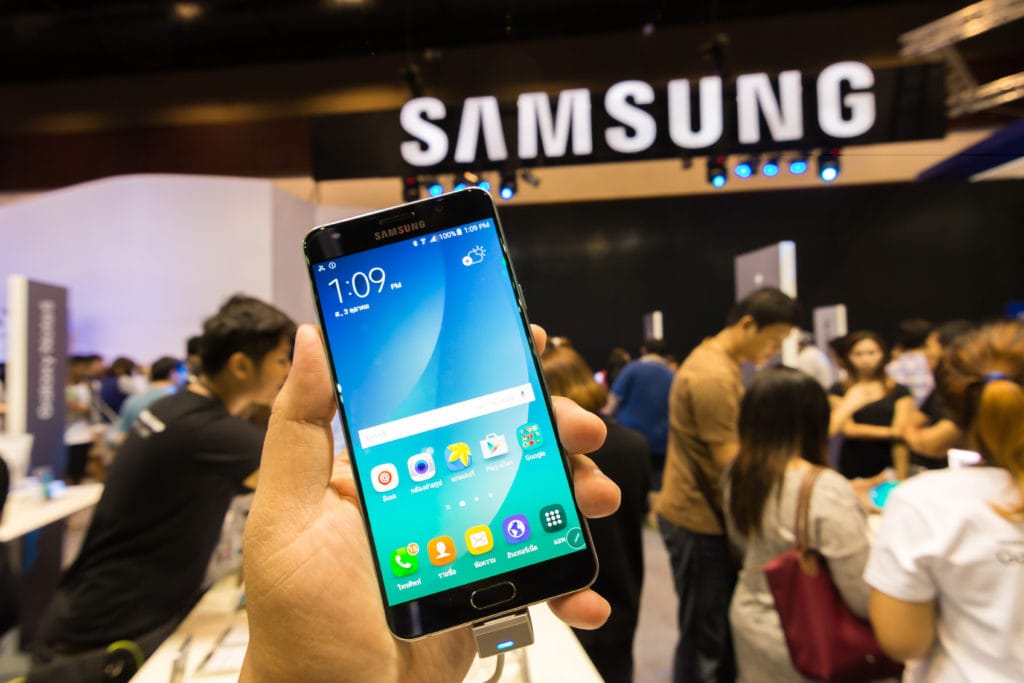The prospect of building a multi-billion dollar business like the Samsung Group might seem absolutely incredible.
If building a seven-figure brand feels like a huge stretch to you, we'd like to propose a little thought experiment. It'll help you develop a bigger perspective on what's possible.
Take the Samsung Group, for example. Its current valuation tops $275 billion.
What if you were to think about your new business as an eight- or even nine-figure business? What impact would you have? How would it change your life and the world? Finally, if you knew you were building a business that would one day be worth so much, what would you do starting now?
Samsung: The Strange History You Never Knew
Samsung Group rose to the top in the global market for consumer electronics. Beyond that, Samsung is also succeeding in other markets you may not know they're in. That includes home appliances, computer chips, and even shipbuilding!
Founded by Lee Byung-chu in 1938l, he and his successors contributed to the success of one of the greatest corporations known today. While Samsung is certainly impressive, it wasn't always that way. Samsung underwent humble beginnings and many struggles. Learn how Samsung went from selling seafood and noodles to becoming a household name.
Samsung Group History Highlights
- Samsung headquarters is in Seoul, South Korea. The company employed over 250,000 employees in 2019.
- Lee Byung-chul founded Samsung in March 1938. Samsung began as a grocery trading store that sold seafood, produce, and noodles.
- Samsung entered many industries throughout its lifetime. Various Samsung Group subsidiaries sold insurance, securities, electronics, and more.
- Samsung Group established Samsung Electronics in 1969.
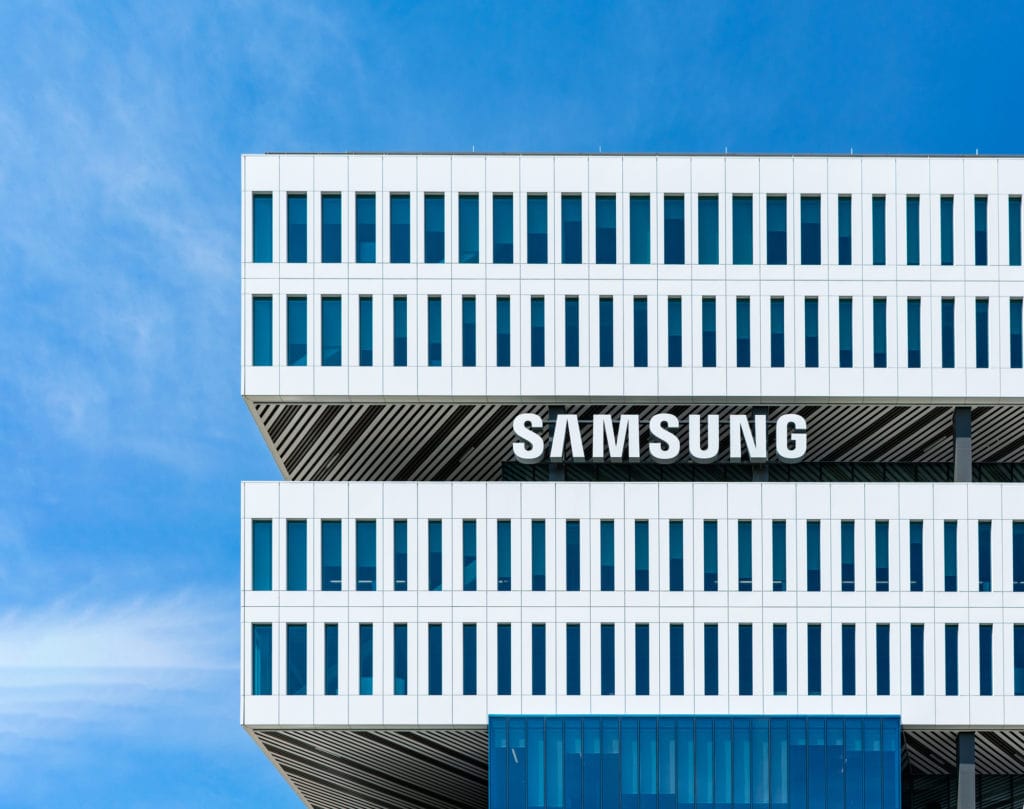
- 1970s: Samsung established the Samsung Semiconductor and Telecommunications Co. Samsung invested heavily in developing technology and electronics.
- 1992: Samsung Group became the largest producer of memory chips in the world.
- 1999: Samsung Electronics was the first company to mass-produce an entire line of digital televisions.
- 2001: Business Week awarded Samsung Electronics rank No. 1 of the world's Top 100 IT Companies.
- 2009: Samsung announced their first Galaxy phone, the Samsung GT-I7500.
- Samsung Electronics Co. heir Jay Y. Lee went to prison prison for bribery charges. Lee attempted to bribe former South Korean president Park Geun-hye to support his formal succession at Samsung.
The Samsung Group History You Didn't Know About
Samsung's Early Beginnings
Lee Byung-chul founded Samsung in 1938 in Taegu, Korea. (Samsung translates into "three stars" in English.) The small grocery trading business employed 40 employees. Then, Samsung sold mostly shrimp, dried seafood, produce, and noodles.
Samsung was only a humble trading store. But Byung-chul envisioned Samsung could transform into a powerful company. Unfortunately, the Korean War outbreak disrupted this dream.
The war beyond North and South Korea ranged from 1950 to 1953. Consequently, Byung-chul had to abandon his business. Samsung suffered looting from both sides. Soldiers and politicians alike took what they wanted and depleted Byung-chul's inventory.
Lee lost everything. Therefore, he had to build his company from the ground up again.
Post-Korean War
However, the Korean War did not crush his entrepreneurial spirit. Determined to make his vision a reality, Byung-chul pulled himself up and started over.
One of Byung-chul's managers contributed capital to help him restart his business. In 1953, Byung-chul opened a sugar refinery. Subsequently, Byung-chul's sugar refinery was the first manufacturing facility built in South Korea post-Korean War.
After the Korean War, the demand for commodities increased. Byung-chul expanded his business into the textile industry. In 1970, the manufacturing process evolved into a full line production. As a result, Byung-chul's company could process raw materials and transform them into a finished product.
Samsung's capabilities eventually extended beyond sugar and wool. Soon, Samsung leaned into heavy manufacturing and industrialization. In 1960, Samsung established various services businesses. This included insurance, securities, and broadcasting. Samsung even launched a radio and television station.
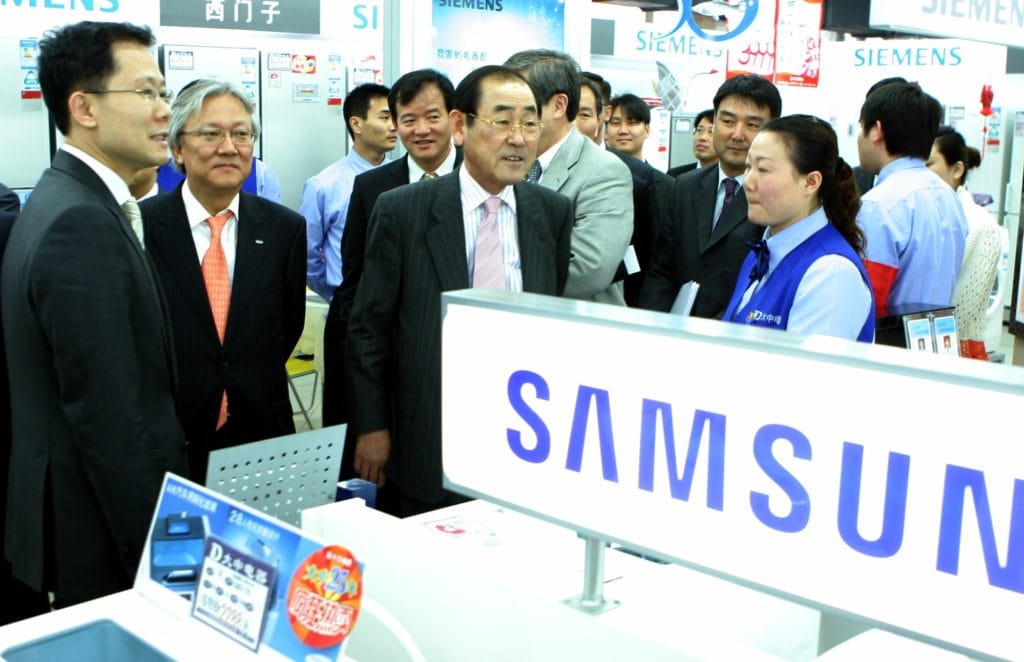
Byung-chul resolved to position Samsung as a leader in whichever industry it entered. This was just one step that would help Samsung innovate and join the global competition.
A Shift to Electronics
Samsung expanded rapidly into many electronics-focused sectors, including:
- Electronic devices
- Electro-mechanics
- Corning
- Semiconductor
- Telecommunications
With so many divisions, Byung-chul decided it was time to do a little restructuring. In short, many of the electronics-related divisions consolidated into a single entity. That company is Samsung Electronics Co., Ltd. Through Samsung's electronics division, Samsung began manufacturing televisions and electronic components.
By the end of the 1960s, Samsung generated more than $100 million in annual revenues.
But, Lee realized that U.S. and European manufacturers dominated the electronics industry. Regardless, Lee was confident he could secure a foothold as a global contender by innovating.
1970 introduced Samsung's first black-and-white TV. After that, Samsung began exporting home electronics products overseas. Within the same decade, Samsung produced a whole host of electronics. Color TVs, air conditioners, and refrigerators soon emerged from Samsung's factors, as well. By 1978, Samsung had produced 5 million televisions.
Alongside their electronics division, Samsung also invested in shipbuilding and aircraft engines. Subsequently, Samsung Heavy Industries became one of the largest shipbuilders in the world.
Under Samsung Electronics, Samsung kicked into high gear with their technology products.
Support From the Korean Government
Samsung's success thus far isn't owed entirely to Byung-chul's leadership. (Mostly, but not all). Samsung grew as rapidly as it did, partly due to government help. In short, Samsung enjoyed benefits granted by policies under a new presidential administration.
Before the Korean War, Korea's citizens struggled under a dictatorship. The Syngman Rhee administration was privy to corruption and favoritism. When military leader Park Chung-hee emerged as the ruling party, things changed for their economy.
Chung-hee's presidency lasted from 1963 to 1979. The Park Chung-hee administration focused on economic growth and development. Chung-hee prioritized empowering profitable companies within key industries with two strategies. The first policy blocked international competition within Korea. The second policy offered financial help to specific companies.
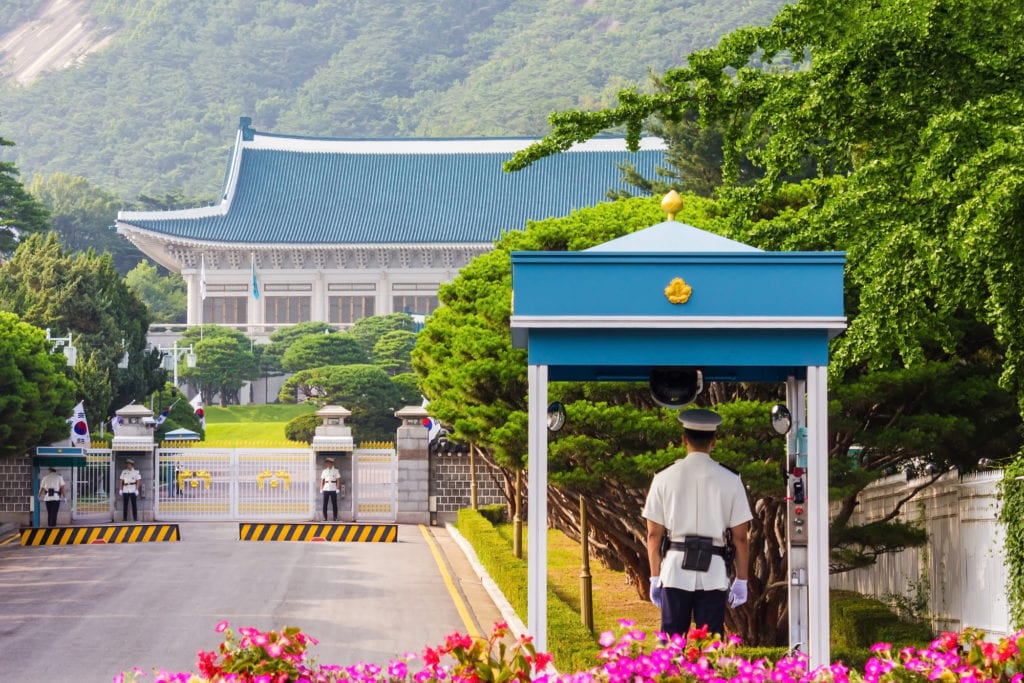
Samsung was on the list to receive government assistance.
Several countries were not allowed to sell their electronic products in South Korea. This policy reduced competition for Samsung. Samsung proliferated and innovated, partly thanks to this policy.
Arguably, this five-year national economic growth plan worked. Subsequently, South Korea's annual exports increased from $33 million to over $17 billion in 1960 and 1980.
Learning About Semiconductors
It was no doubt in Byung-chul's mind that technology and electronics were the future. Byung-chul intended for Samsung to be a primary contender.
In 1978, Byung-chul formed the Samsung Semiconductor and Telecommunications Co. Certainly, this set the stage for Samsung to become a leading provider of semiconductor chips.
Still, Byung-chul realized that their technology still lagged behind other international companies. As a result, the South Korean government allowed foreign investment in the Korean market. In exchange, these companies would share their technology.
For Samsung, they learned what they needed about advanced semiconductor technology. Samsung also absorbed technology from Micron Technology, Inc. in the United States. They also learned from Sharp Corporation in Japan in 1983. Finally, Samsung could begin manufacturing memory chips.
First, Samsung manufactured the 64-kilobit dynamic random access memory (DRAM) chips. After further innovating, Samsung became a major supplier of low-cost DRAM chips. Samsung served computer and electronics manufacturers throughout the world.
Lee Byung-chul Hands Over the Reigns
Lee Byung-chul died in 1987. Subsequently, his youngest son Kun-hee took over and helped Samsung transform into a full-scale conglomerate.
Like his father, Kun-hee recognized the importance of the electronics division. He decided to make some internal improvements, such as consolidating and divesting divisions. As a result, Kun-hee introduced various initiatives to innovate products and increase employee retention.
Kun-hee also focused on positioning Samsung as the go-to provider of semiconductor technology. In 1988, Samsung Semiconductor and Telecommunications merged with Samsung Electronics. Together, they focused on home appliances, semiconductors, and telecommunications.
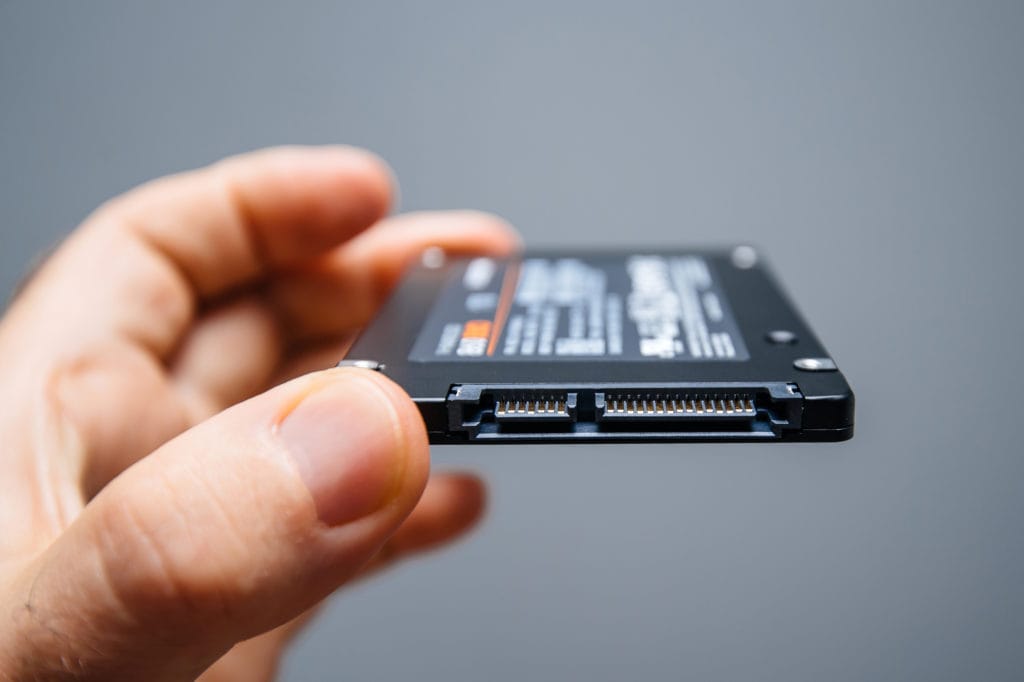
Samsung achieved many victories in the 1990s:
- 1992: Samsung became the largest memory chip producer in the world. That is to say, sales more than doubled from 1987 to 1992.
- 1994: Samsung Electronics turned heads after introducing a 4-megabit DRAM chip. Sales increased from $10.7 billion in 1993 to $14.94 billion in 1993. Profits soared from $173,000 to nearly $1.3 billion.
- 1995: Samsung exports increased to $10 billion. Samsung also began development on the world's first 1-gigabit synchronous DRAM chip. Kun-hee used these profit gains to increase research and development.
- 1999: Kun-hee also founded Samsung Ventures for investing in startup companies.
Samsung experienced wild success, and many credit Kun-Hee for this victory.
Samsung Struggles During Korean Economic Crash
In 1997, Korea underwent an economic crash. Consequently, in 1998, the Korean won (their currency) was less than half its value in 1997.
The economic crash heavily affected Samsung.
In 1996, DRAMA chip prices took a nosedive due to oversupply. Samsung's semiconductor-related sales were down nearly 32%.
To compensate, Samsung had to lay off employees: 26% of domestic workers and 33% of international workers. Subsequently, this led to lower production.
Samsung realized that they needed to do something more.
In 1997, Yun Jong-yong became Samsung CEO. Jong-yong executed a strategy to turn things around for Samsung. This strategy revolved around creating internal systems to increase efficiency.
- Jong-yong wanted Samsung's team to analyze growth markets better to manage prices.
- Communication needed to improve between company managers.
- Jong-yong wanted to provide more overseas managerial support.
- Finally, Jong-yong wanted to put in place a new marketing strategy.
Jong-yong also realized Samsung needed to reduce its dependence on memory chips. If they wanted to avoid another devastating revenue loss, they needed to diversify and innovate.
Samsung's Bounce Back
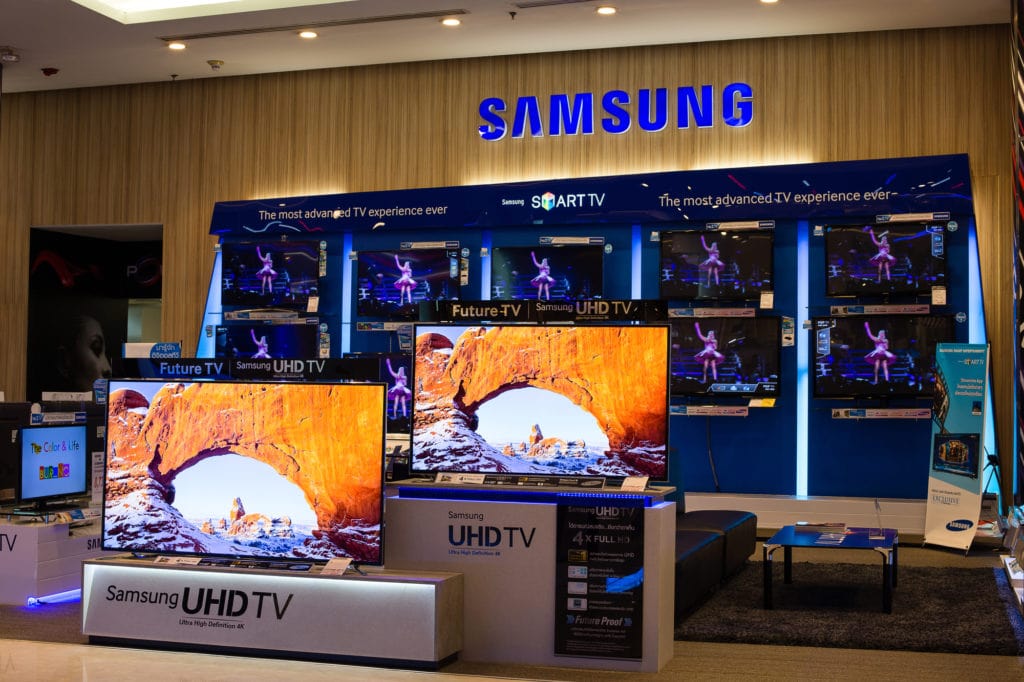
In 1998, Samsung developed a flat-screen television. Then, in 1999, Samsung Electronics was the first company to mass-produce a complete product line of digital televisions.
In 1999, memory chips comprised only 20% of Samsung's sales. After selling off dozens of its divisions, Samsung lowered their long-term debt by $10.8 billion. Sales increased to $22 billion (up 24%), and Samsung raked in a $2.4 billion profit. Samsung's stock price more than doubled up to $277 per share.
Samsung also partnered with Yahoo! to sell their products on the network. They also worked with Microsoft to produce a cell phone line.
Here is the breakdown of sales between Samsung's divisions:
- Memory chips were 38% of sales.
- Information and telecommunications equipment took 22% of sales.
- Digital media comprised 27% of sales.
- Home appliances accounted for 8% of sales.
During the Korean economic crash, Samsung was heavily reliant on memory chip sales. This was one reason why Samsung suffered significantly. By diversifying its product line and producing new electronics, Samsung was able to reduce its dependency.
Forbes recognized Samsung as a world leader in consumer goods and services. In January 2020, Jong-yong landed on Fortune as Asia's Businessman of the Year.
Many praised Jong-yong for leading Samsung through the Asian crisis. Samsung emerged much stronger thanks to Jong-yong's directive.
Samsung in the 21st Century
The company made significant progress in 2000 and beyond.
Throughout the mid-2000s, Samsung became a significant competitor in the market for all things in electronics. Samsung sold televisions, audio systems, and home appliances. In fact, Samsung could go toe-to-toe with popular brands, including Panasonic and Sony.
In 2001, Samsung made strides in the phone market. Samsung worked on the SPH-1300. This was an early Palm OS-based smartphone that used Sprint's mobile phone network. In 2005, Samsung developed the first speech-recognition phone. Users could speak, and the phone would convert the words into text.
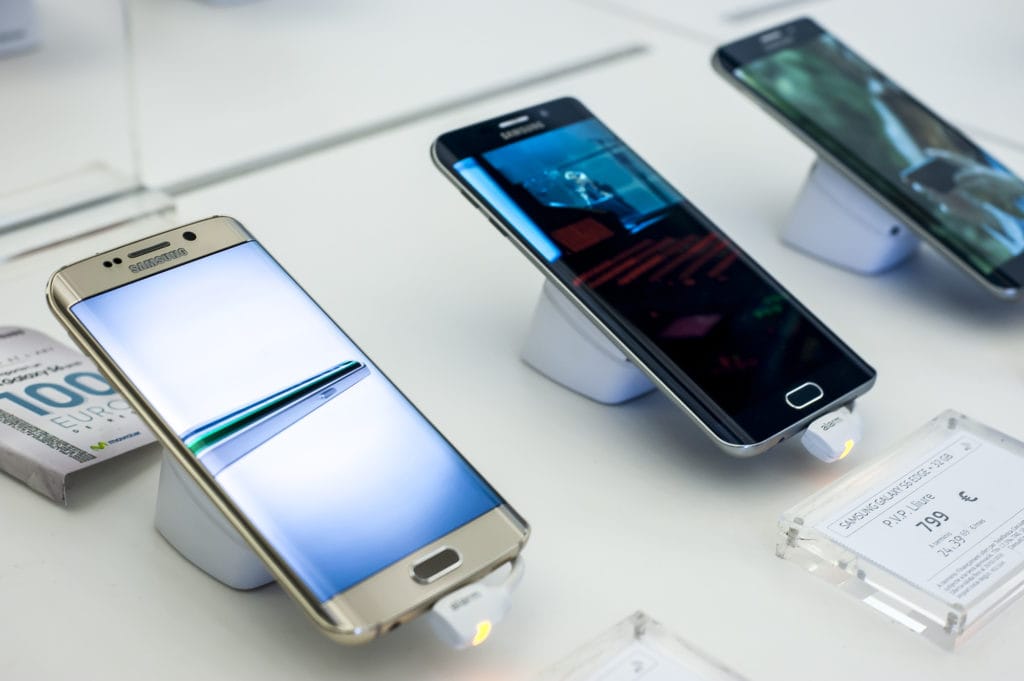
Finally, in 2009, Samsung released what many of us are familiar with today: The Samsung GT-I7500 Galaxy. This was Samsung's first cellular device powered by Android.
In 2011 and 2012, Samsung then released the Galaxy S II and Galaxy S III. If releasing these popular consumer products wasn't enough, Samsung also had to one-up their competitors. In 2012, Samsung became the world's largest maker of mobile phones.
The Galaxy S4 (released 2013) became the 9th best-selling phone of all time. Over 80 million units sold during its lifetime. Many consider the Galaxy S4 as the best-selling Android phone.
During this decade, Samsung also experimented with other types of technologies. This included virtual reality and even a self-driving car. In 2017, Samsung gained governmental permission to test a self-driving car.
In fact, Samsung played with so many ideas that they had the most US patents approved ever.
Revenue
Throughout the past years, Samsung continued reporting strong numbers. Samsung's revenue has not dipped below $69 billion since 2005. And in 2017, Samsung reported the highest revenue they earned: $222 billion. In 2018, Samsung reported a $39 billion net profit.
Samsung is facing some struggles due to the coronavirus pandemic. Samsung's shipments drastically fell. The company shipped 75.5 million units in Q2 2019. In the same quarter of 2020, that unit fell to 54.2 million units.
However, the Samsung Group stock for its electronic division is still doing well. It has risen 50% to "levels around $1,850 per share" over 2020, according to Forbes. The "stay-at-home economy" increased the demand for memory products for PC and mobile devices.
Samsung’s Bribery Scandal
Samsung Electronics Co. heir Jay Y. Lee is currently in prison for bribery charges. He was first jailed in 2017 when his corruption scandal with former South Korean President Park Geun-hye came to light. Lee served only one year in prison and went home in February 2018. The Supreme Court ordered a retrial in 2019.
The illegal events revolved around bribery and Lee's formal succession at Samsung. Lee attempted to bribe the former president in exchange for his support.
But wait, there's more.
The type of bribery isn't what you might think. Lee was convicted for offering money and horses for the former president's support. Samsung Electronics' share price fell 3.4% after Lee's sentencing, according to Bloomberg.
Lee expressed regret over his actions when he read a public apology in court.
"Samsung has been running without looking back, but I missed something vital. It became Korea's leading company, the importance of its social role, responsibility, and public trust was overlooked. Now Samsung will be different. I'll be the first to change... No matter what happens, I will never do anything to pursue my personal interests. I will raise the value of the company and focus on social contributions, fix what the court has pointed out as the harms of chaebol," he said.

While Lee may manage the company behind bars, the company faces unique challenges. Most prominently, there is a vacuum in leadership at Samsung. Moreover, Samsung needs to navigate through the COVID-19 pandemic carefully.
Samsung is a major company in South Korea. We wonder how this might affect public opinion in Samsung's home base.
Samsung FAQs
Who is the owner of the Samsung company?
Lee Byung-chul founded Samsung in 1938. The current CEOs of Samsung Electronics are Koh Dong-Jin, Kim Ki Nam, and Kim Hyun Suk.
Who are Samsung's competitors?
Since Samsung operates across many industries, the competitors will vary. Major competitors include Apple, Huawei, Xiaomi, Oppo, LG, Sony, Intel, Panasonic, and Electrolux.
Apple is a significant competitor. But it still lags behind the Samsung mobile brand in global revenues. Samsung controls 20-30% of the worldwide market. Apple holds only 15%
Does Samsung own JBL?
Yes, Samsung owns JBL, the American manufacturing company for audio equipment. Harman International Industries initially owned JBL until Samsung Electronics acquired it in 2017.
Does Google Own Samsung?
No, Google does not own Samsung, but they are partners. Samsung Electronics is still under the parent company, Samsung Group.
Samsung recently announced that it is joining Google's Android Enterprise Recommended Program. Galaxy devices running Android 11 may qualify to join the program.
What does the Samsung company do?
Samsung is primarily known for its Galaxy line of smartphones. It's also a popular brand in other product categories, manufacturing televisions, home appliances, and even ships. In the late 20th century, Samsung was a major supplier of low-cost DRAM chips.
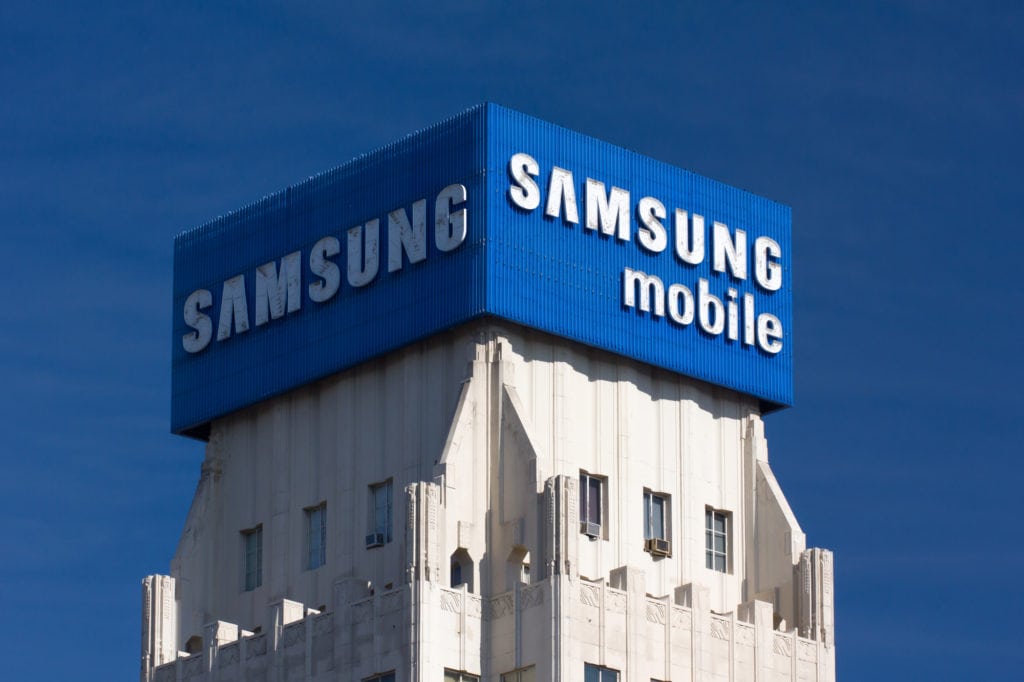
Does Samsung make weapons?
The Samsung Group established Samsung Precision (later named Samsung Aerospace Industries). This division manufactured military equipment, including artillery systems and military tanks.
The Bottom Line
Samsung has sold so many consumer products you likely didn't know about. From fish and textiles to some of the best smartphones on the market, Samsung continues to impress.
Samsung's early offerings expanded into many industries. You might say they were experimenting with different products and testing which would be most profitable. Finally, Samsung's leaders realized that technology and electronics were the future.
Samsung did some careful maneuvering and made thoughtful decisions. These actions help the company manufacture superior products and become a household name.
Just as entrepreneurs can learn a lot from studying successful business people who came before us, there's value in studying the history of big brands. What lessons can you take away from this consumer product powerhouse to help you build your own brand?
